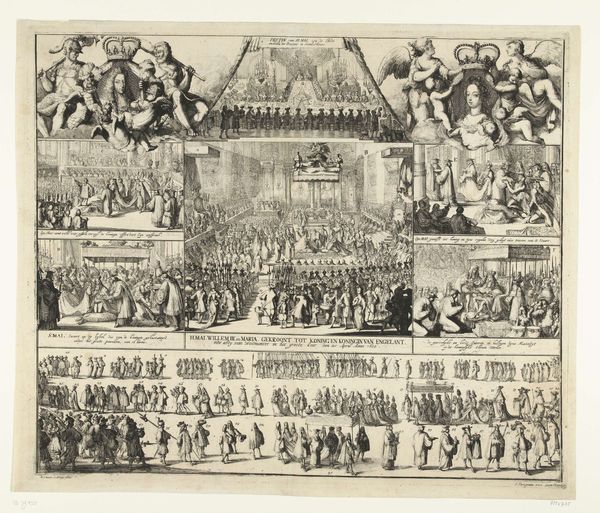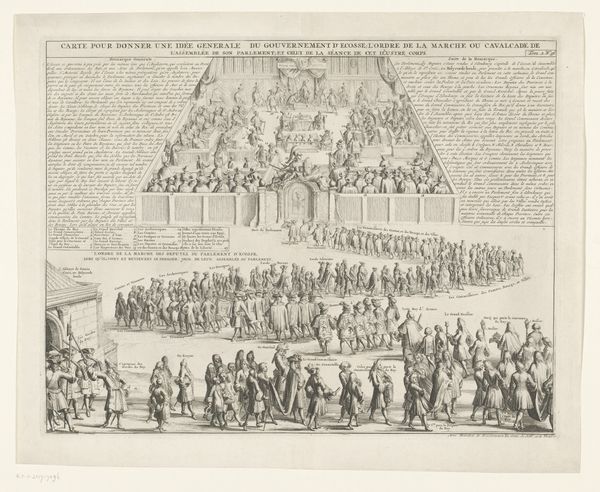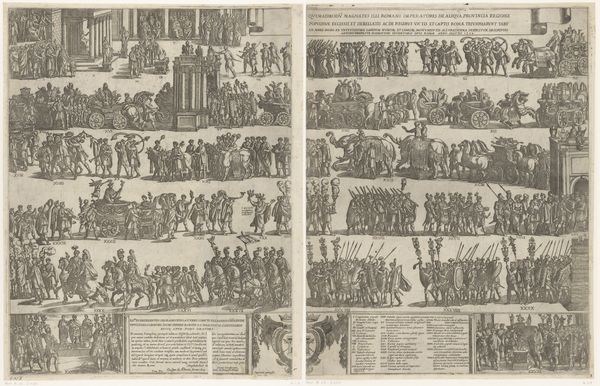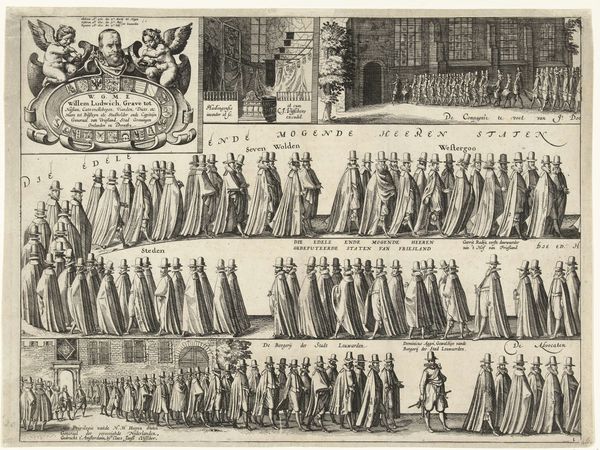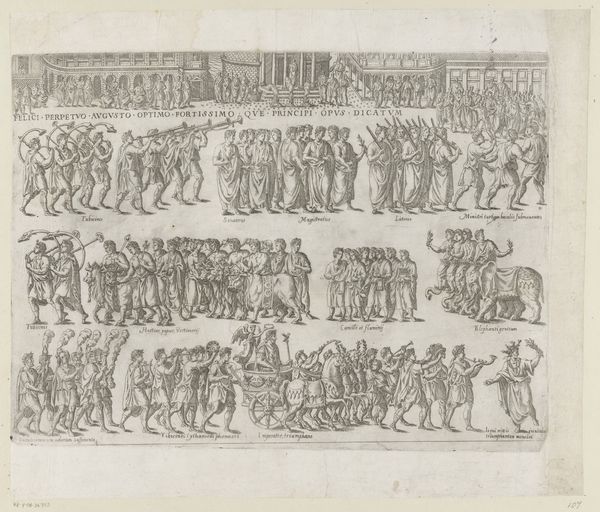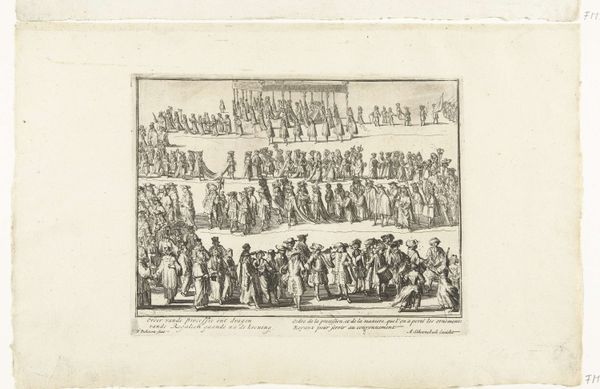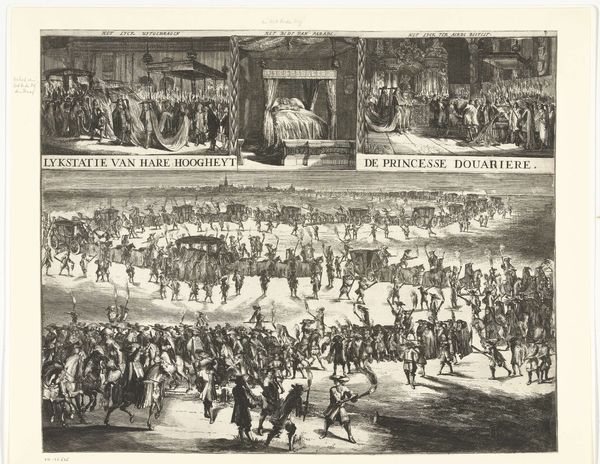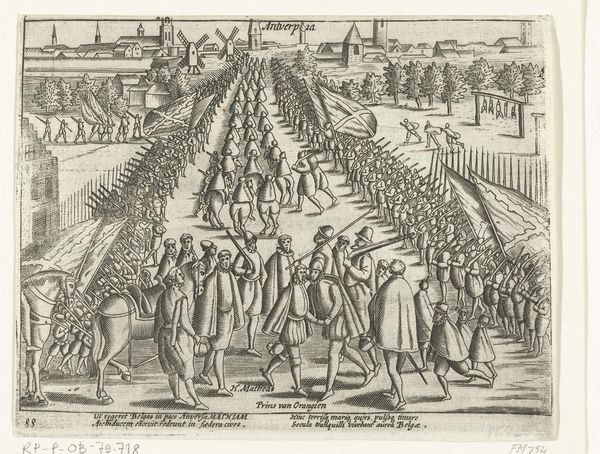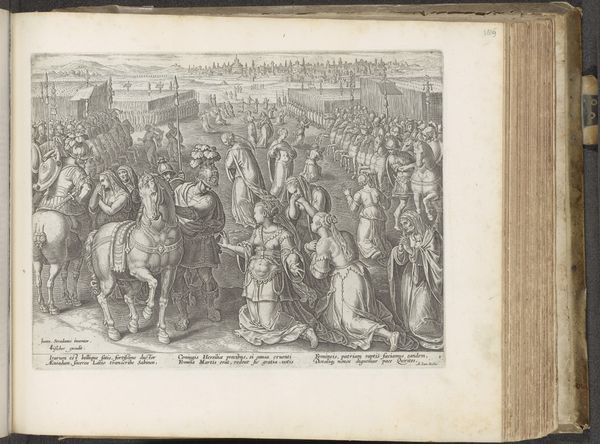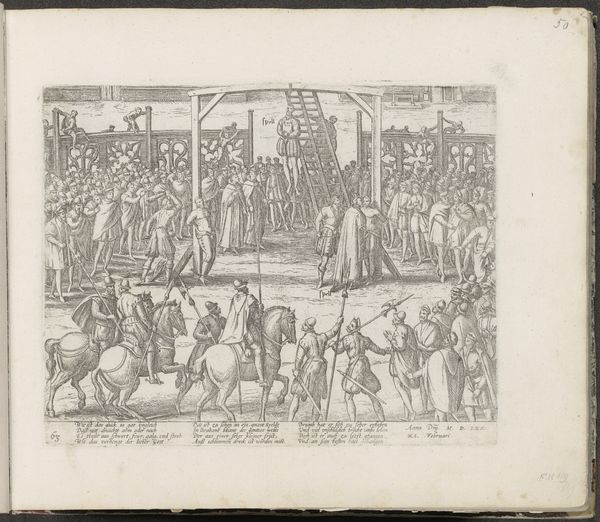
The procession of the casket of St. Genevieve, with clerics and laymen marching in six rows; in the foreground the Archbishop of Paris is carried in a chair, the Chasse in the row above him, and the monks of the monasteries of Paris lead the procession at top 1652
0:00
0:00
drawing, print, etching
#
drawing
#
baroque
#
pen drawing
# print
#
etching
#
cityscape
#
history-painting
Dimensions: Sheet (Trimmed): 12 1/2 × 18 1/8 in. (31.8 × 46 cm)
Copyright: Public Domain
Editor: This is "The Procession of the Casket of St. Genevieve" made in 1652 by Nicolas Cochin. It’s an etching and, wow, the detail is incredible. It almost feels like an assembly line of devotion! I’m curious, what can you tell me about how it's made and what this kind of print represents? Curator: Look at the sheer quantity of bodies represented here; row after row marching through the city! What's fascinating is how this print, in its relatively inexpensive and reproducible form, democratizes this procession. Rather than a single, unique painted depiction reserved for the elite, here is a mass-produced image bringing this religious spectacle to a wider audience. What do you think about the labour involved in producing such an image, and then, its availability? Editor: So, it's about who had access to art. Did the making of the etching itself become part of how people thought about the religious procession? Was the creation of art democratized via printed copies of the same work of art, changing the perception? Curator: Exactly! Think about the material reality: copper plate, ink, paper, the press. The engraver's labor transforming a sacred event into a commodity. This challenges the traditional hierarchy of art. Is Cochin's work "high art," or is it a craft product feeding a demand? Is it even devotional, or is it early marketing material? The scale of the work, that's been repeated in multiple printings too, adds more dimensions to its significance. Editor: That's a different perspective than I expected. I always thought about etchings in terms of their artistic skill. It's intriguing how mass production changes everything. Curator: Precisely. It makes us consider who benefits from art and what meaning it carries when transformed into a replicable object available to a larger public. We gain insight on value systems and material practices operating during this time. Editor: Thinking about it as a 'commodity' shines a totally different light on this historical work, and reveals how 'devotion' may have evolved with new tech for making images and more copies to be sold!
Comments
No comments
Be the first to comment and join the conversation on the ultimate creative platform.


